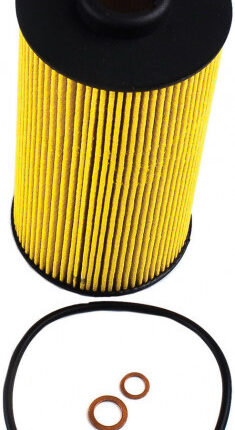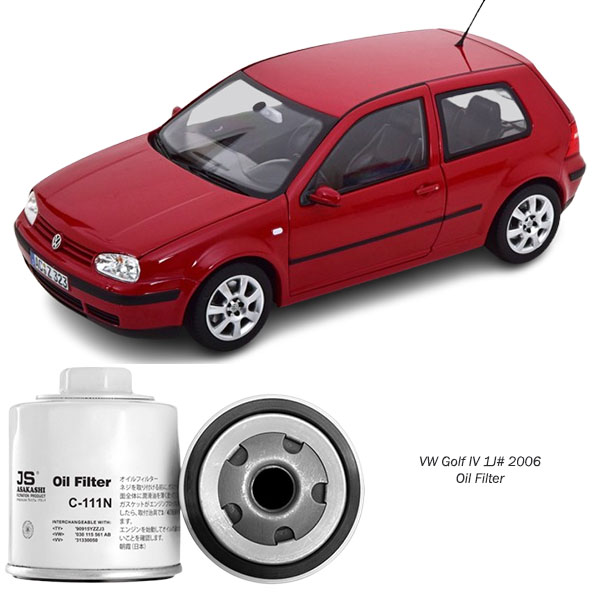-20%
Get VW Golf IV 1J# 2006 Oil filter C111N in Kenya
The oil filter is a crucial component of a vehicle’s engine system, ensuring that the engine oil remains clean and free from harmful contaminants. As the lifeblood of any engine, oil plays a vital role in lubrication, cooling, and reducing wear and tear. Without a functioning oil filter, the engine’s efficiency and longevity would be severely compromised. This guide provides an in-depth look into oil filters, including their functions, types, benefits, maintenance, and much more.
1. What is an Oil Filter?
An oil filter is a mechanical device that removes contaminants, debris, and sludge from engine oil. Over time, as engine oil circulates, it collects impurities from combustion, metal particles from engine wear, and other environmental contaminants. The oil filter traps these impurities, preventing them from recirculating within the engine and causing damage.
2. Functions of an Oil Filter
The oil filter performs several essential functions in an engine:
a. Removal of Contaminants
The primary role of the oil filter is to capture and hold debris, dirt, and sludge that can accumulate in engine oil over time.
b. Ensuring Oil Cleanliness
Clean oil ensures that engine components move smoothly, reducing friction and wear.
c. Protecting Engine Components
By removing harmful particles, the oil filter prevents premature wear and tear on critical engine parts like pistons, crankshafts, and camshafts.
d. Regulating Oil Flow
High-quality oil filters maintain consistent oil flow even when partially clogged, ensuring that the engine always has sufficient lubrication.
3. Types of Oil Filters
Several types of oil filters are designed to cater to different engine requirements:
a. Full-Flow Filters
- Also known as primary filters, these are standard in most vehicles.
- They filter all the oil before it circulates through the engine.
- Designed for high oil flow rates and general filtration.
b. Bypass Filters
- Operates alongside full-flow filters, filtering a small percentage of oil at a time.
- Provides finer filtration by targeting smaller particles.
c. Cartridge Filters
- Feature a replaceable filter element.
- Eco-friendly as the housing remains reusable.
d. Spin-On Filters
- Consist of a metal canister housing the filter element.
- Entire unit is replaced during maintenance.
e. Magnetic Filters
- Use magnetic fields to attract and capture metal particles.
- Often used as a supplementary filtration method.
f. High-Efficiency Filters
- Designed for specific vehicles requiring enhanced filtration.
- Ideal for engines operating under severe conditions.
4. Components of an Oil Filter
An oil filter is a complex assembly of various parts that work together to ensure effective filtration:
a. Filter Media
The core material responsible for trapping contaminants. Common materials include:
- Cellulose
- Synthetic fibers
- Micro-glass fibers
b. Anti-Drainback Valve
Prevents oil from draining out of the filter when the engine is off, ensuring immediate lubrication upon startup.
c. Relief Valve
Opens when the filter becomes clogged or during cold starts, allowing oil to bypass the filter to prevent engine starvation.
d. Housing
A durable metal or plastic casing that protects the internal components.
e. End Caps
Seal the ends of the filter media and direct oil flow efficiently.
5. Benefits of a Functional Oil Filter
A properly working oil filter offers several advantages:
a. Enhanced Engine Performance
By maintaining clean oil, the filter ensures smoother engine operation and reduced friction.
b. Extended Engine Life
Preventing contaminants from causing damage extends the overall lifespan of the engine.
c. Improved Fuel Efficiency
Clean oil reduces resistance in engine components, improving fuel economy.
d. Reduced Emissions
A clean engine operates more efficiently, leading to fewer harmful emissions.
e. Cost Savings
Proper filtration reduces the likelihood of costly repairs due to engine damage.
6. Signs of a Failing Oil Filter
Like any component, oil filters can degrade over time. Recognizing the signs of a failing oil filter can prevent potential engine damage:
a. Low Oil Pressure
A clogged filter can restrict oil flow, leading to reduced oil pressure.
b. Engine Overheating
Restricted oil flow reduces lubrication, causing excessive heat and friction.
c. Dirty Exhaust Smoke
Excess contaminants in the oil can burn in the engine, producing darker exhaust smoke.
d. Unusual Engine Noises
A lack of lubrication can cause knocking or grinding noises in the engine.
e. Frequent Oil Contamination
Oil that becomes dirty quickly may indicate a failing or ineffective filter.
7. Causes of Oil Filter Problems
Several factors can contribute to oil filter issues:
a. Lack of Maintenance
Failing to replace the filter at regular intervals allows it to become clogged.
b. Poor-Quality Filters
Using substandard filters may result in inadequate filtration and reduced durability.
c. Contaminated Oil
Oil that is not changed regularly introduces excessive debris into the filter.
d. Incorrect Installation
Improper installation can lead to leaks or reduced filtration efficiency.
8. Oil Filter Maintenance
Proper maintenance ensures that the oil filter performs optimally:
a. Regular Replacement
Oil filters should be replaced during every oil change, typically every 3,000 to 7,500 miles, depending on the vehicle and oil type.
b. Use High-Quality Filters
Opt for reputable brands that meet or exceed manufacturer specifications.
c. Follow Manufacturer Guidelines
Refer to the owner’s manual for specific maintenance schedules and filter types.
d. Monitor Oil Levels
Regularly check and top up engine oil to ensure sufficient lubrication.
9. How to Replace an Oil Filter
Replacing an oil filter is a straightforward process:
Step 1: Prepare Tools and Materials
You’ll need a new oil filter, oil filter wrench, drain pan, gloves, and fresh engine oil.
Step 2: Drain the Oil
Locate the oil drain plug, remove it, and let the oil flow into the drain pan.
Step 3: Remove the Old Filter
Use the oil filter wrench to loosen and remove the old filter. Be prepared for some oil spillage.
Step 4: Install the New Filter
Lubricate the rubber seal of the new filter with fresh oil, then screw it into place by hand. Tighten it securely but avoid over-tightening.
Step 5: Refill Oil
Replace the drain plug and add fresh engine oil to the appropriate level.
Step 6: Check for Leaks
Start the engine and inspect for any oil leaks around the filter and drain plug.
10. Choosing the Right Oil Filter
Selecting the right oil filter is crucial for optimal engine performance:
a. Compatibility
Ensure the filter matches your vehicle’s make, model, and engine specifications.
b. Filtration Efficiency
Look for filters with high filtration ratings for better performance.
c. Durability
Choose filters with robust construction to withstand engine pressure and temperature.
d. Brand Reputation
Opt for trusted brands known for quality and reliability.
11. Benefits of Regular Oil Filter Maintenance
a. Prolonged Engine Health
Clean oil ensures that engine components remain in excellent condition.
b. Consistent Performance
A functioning oil filter guarantees optimal engine performance.
c. Reduced Repair Costs
Preventative maintenance reduces the risk of expensive engine repairs.
d. Environmental Benefits
Efficient oil filtration contributes to lower emissions and reduced environmental impact.
12. Frequently Asked Questions
a. Can I clean and reuse an oil filter?
Most oil filters are disposable and should be replaced during oil changes. Reusable filters are rare and require specialized cleaning.
b. What happens if I don’t replace the oil filter?
A clogged or old filter can lead to reduced oil flow, engine damage, and increased wear on components.
c. Are all oil filters the same?
No, oil filters vary in size, design, and filtration capability. Always use a filter designed for your vehicle.
13. Conclusion
The oil filter is a small but indispensable part of an engine’s health and performance. By understanding its functions, maintaining it properly, and replacing it as needed, you can ensure your engine runs smoothly and lasts longer. Prioritize high-quality filters and follow manufacturer guidelines for replacements to keep your vehicle in peak condition.
Follow us on Facebook for more parts.



